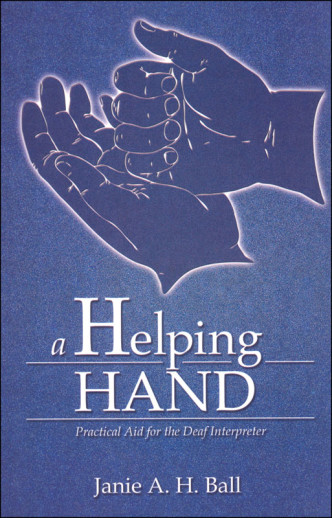We use cookies to make your experience better. To comply with the new e-Privacy directive, we need to ask for your consent to set the cookies. Learn more.
Helping Hand: Practical Aid for the Deaf Interpreter
SKU
022135
Grade 6-12
These icons are designed to help you quickly understand and learn important information about our products.
Teaching Method
Traditional
Teacher-centered curriculum commonly used in classrooms that may include a text, teacher manual, tests, etc.
Charlotte Mason
A methodology based on the work of a 19th century educator who maintained that children learn best from literature (Living Books), not textbooks.
Classical
A methodology based on the Latin Trivium (three stages of learning), including the grammar stage (memorization and facts), logic stage (critical thinking), and rhetoric stage (developing/defending ideas).
Unit Study
A thematic or topical approach centered around one topic that integrates multiple subject areas.
Montessori (Discovery)
A methodology based on the work of a 20th century educator that emphasizes student and sensory-driven discovery learning and real-life applications.
Other
Other methodologies
Religious Content
Secular
Contains content contrary to common Christian beliefs (i.e. evolution).
Neutral
Avoids religious or theoretical topics or presents multiple viewpoints without preference.
Christian/Religious
Faith-based or including instructional religious content.
Learning Modality
Auditory
Learns through listening, talking out loud or reading out loud.
Visual
Learns through seeing, prefers written instructions and visual materials.
Kinesthetic/Tactile (Hands-On)
Learns through moving, doing and touching.
Multi-Sensory
Curriculum that employ a variety of activities/components.
Presentation
Sequential
Curriculum progresses through well-defined learning objectives. Emphasizes mastery before moving to the next topic.
Spiral
Topics and concepts are repeated from level to level, adding more depth at each pass and connecting with review.
Conceptual/Topical
Focus is on the “why,” often with a unifying concept as well as specific skills; coverage may be broader.
Teacher Involvement
Low Teacher Involvement
Student-led materials; parent acts as a facilitator.
Medium Teacher Involvement
A mix of teacher-led time and independent student work.
High Teacher Involvement
Teacher-led lessons; may utilize discussions, hands-on activities and working together.
Additional Materials Required
No other materials needed
Everything you need is included.
Other Materials Required
There are additional required resources that are a separate purchase.
Other Materials Optional
There are additional resources mentioned or recommended but are not absolutely necessary.
Consumable
Consumable
Designed to be written in; not reusable.
Non-Consumable
Not designed to be written in; reusable.
Our Price
$8.00 $8.00 $6.95
Rainbow Savings: $1.05
Description
For the student interested in learning sign language, this book will give you some insight to using your knowledge as an interpreter for the deaf. Learn the difference between SEE and ASL, as well as the grammatical elements you will need to work as an interpreter. Later in the book, answer questions about sign language and the deaf ministry, including practical advice and how to teach others to sign. ~Sara
Publisher's Description of Helping Hand: Practical Aid for the Deaf Interpreter
An excellent source for interpreters at any level! In her new book, A Helping Hand, Janie A.H. Ball puts years of ASL experience into practical application for those wishing to further their ASL abilities. Chapter titles include: The Five Components of Sign Language; Condensed Signing and Thinking Deaf; Homonyms; Adverbs; Tenses; and Negatives and Positives, plus many more! You will find this book both easy to read and helpful.
Details
| Product Format: | Paperback |
|---|---|
| Brand: | Bill Rice Ranch |
| Author: | Janie A.H. Ball |
| Grades: | 6-12 |
| Length in Inches: | 8.375 |
| Width in Inches: | 5.375 |
| Height in Inches: | 0.3125 |
| Weight in Pounds: | 0.35 |
Videos
Reviews

